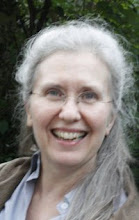Beyond white-washed blast walls of hewn stone topped by concertina rolls of barbed wire, stretch vast, long-established shantytowns that receive the full exhaust of planes day and night as they idle on the runway waiting to take off. Bordering these runways, acres of rusted scrap and splintered wood form ragged rows and piles of attached huts covered by corrugated metal with occasional patches of blue plastic tarp.
Clothes hang to dry in murky grey smog that blankets the airport in this bone dry season. Scrawny goats nose through rubbish to nibble grass growing in the effluent from a large sewer pipe. Children scamper barefoot in rubble that dominates the squatters' city lining the runways.
Apollo Hospital’s driver waits outside Jet Airways with my name on a sign. Loading our luggage in back, he does not notice Maud slipping into the passenger seat to the left of the steering wheel. Moments later, with both hands covering her face, she surveys the tumultuous highway through cautiously spreading fingers.

Great Britain persuaded some colonies like India to reverse prevailing wisdom and drive on the left side of the road as they do in England.

Learning to drive here requires keeping your hand on the horn as much as your foot on the gas. Both must operate in tandem.

Streets pulse with every possible wheeled contrivance: bicycles, motor scooters, curvy little white taxis, three-wheeled yellow taxis with hugely polluting 2-stroke engines. In the distance I see a legless man pedaling a tricycle with his hands.

Ancient government buses boast layers of paint and not much glass remaining in their windows. Poison pumps from their tailpipes. Pedestrians and bulls join the melee of motors.

An entire family rides a single motorcycle. Seated side-saddle behind drivers, women--often wearing sarees--sometimes hold babies. I wonder how they keep their long scarves from getting drawn into the spokes. Toddlers and older children, cling to the motorcycle in front, leaning into the wind.

Drivers ignore traffic lanes painted on the street as if they are merely a bothersome bureaucrat's bad idea.

In the city people sometimes wear helmets, but seat belts are hard to find. Everywhere I look, accidents are waiting to happen.

A physiotherapist later tells us that traffic mishaps account for most of their patients.

You might think police concerned about public safety would be the first to protest such derring-do. You would be wrong.
The Hindu Times shows a photo of police officers—at least eleven, two of them hidden from view--balancing at odd angles on a single motorcycle at the All India Police Duty Meet held at Chennai’s Rajarathinam Stadium the week before our arrival.

Specially selected police teams from various cities and states completed three months of rigorous training and then competed for medals.
It appears to be an advertising gimmick to attract recruits to a new image of police work-- finally liberated from bureaucratic wimpishness to competitive opportunities that display a “touch of bravado.”
Like so much in India, the conflicting messages here seem counter-intuitive: Is the idea inspired or bonkers?
 [Photo by R. Ragu in The Hindu Times, Sunday, Jan 21st, 2007, p. 4.]
[Photo by R. Ragu in The Hindu Times, Sunday, Jan 21st, 2007, p. 4.] Maud studies the caption: PROVING THEIR PROWESS.
What does PROWESS mean? she asks.
“Foolishness,” I suggest, but she is not convinced.
No! What does it really mean?
“I guess they think it makes them look good,” I suggest.
Oh, she says. Like the American doctor wearing penny nails for shoes?
“Exactly,” I say. “Prowess."
